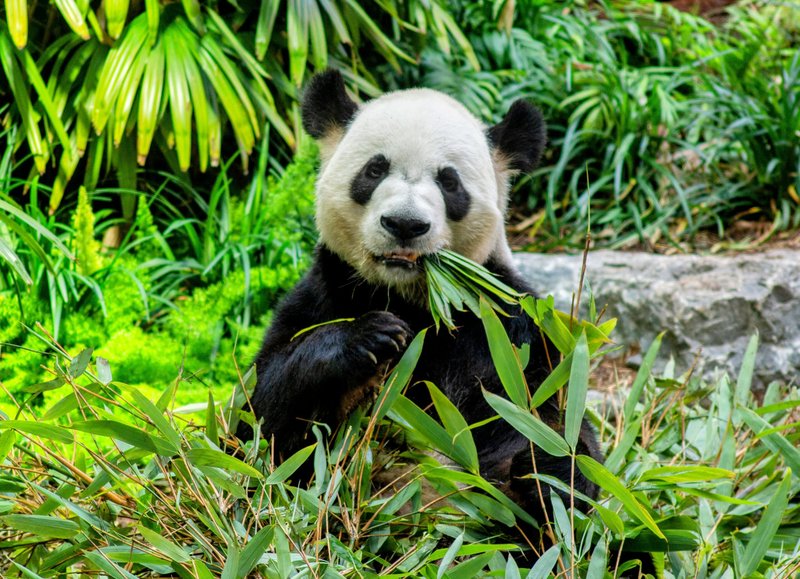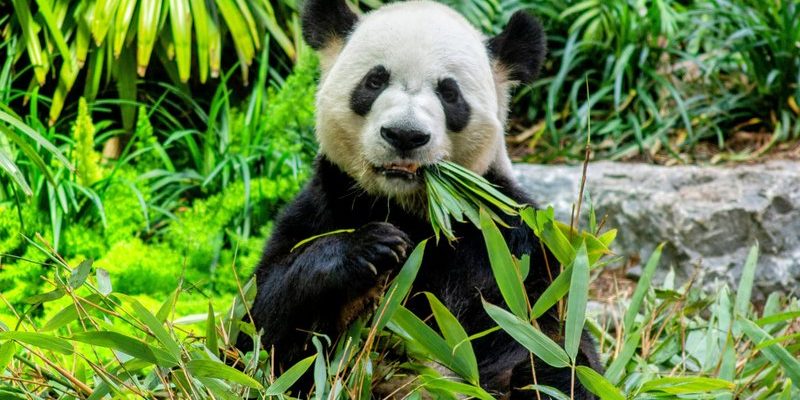
Pandas are often seen lounging in trees or munching on bamboo, but their adaptability goes deeper. Their ability to thrive in tough climates can teach us a lot about resilience and living harmoniously with nature. So, how do these black-and-white giants manage to keep their cool, even when the conditions aren’t ideal? From their unique diets to their social habits, let’s explore the fascinating world of pandas.
The Role of Bamboo in Their Survival
First things first—bamboo is the cornerstone of a panda’s diet. This plant not only provides the majority of their food but also plays a crucial role in their survival. Pandas spend about 10 to 16 hours a day munching on bamboo. That’s a whole lot of munching! But why so much bamboo? It’s because bamboo is low in nutrients, which means pandas need to eat a lot to get the energy they need to survive.
Here’s the twist: pandas are incredibly picky eaters. They prefer specific types of bamboo, often choosing species that are fresh and tender. This is important because the availability of bamboo can change with the seasons and weather conditions. When a particular type runs low, pandas have to search for other varieties, showcasing their adaptability.
Bamboo is also resilient, which helps pandas. This plant can regenerate quickly and thrives in areas with heavy rainfall, a common feature in the panda’s habitat. So, when one area is depleted, pandas can move around to find more bamboo, ensuring they have a steady food supply.
Physical Adaptations for Harsh Weather
Let’s talk about how pandas have evolved physically to cope with their environment. Their thick fur is designed to keep them warm during cold mountain days. The fur is not just any ordinary coat; it’s denser around the neck and back to protect against chilly winds. You might say it’s like wearing a cozy blanket, all day, every day!
Pandas also have strong limbs that allow them to climb and maneuver through rocky terrains. This ability is crucial, especially when they need to find food or seek shelter from extreme weather. Think of it like being a natural gymnast—pandas are quite agile for their size, helping them navigate their rugged homes.
Another interesting feature is their unique wrist bone, which functions like a thumb. This special adaptation allows pandas to grip bamboo tightly as they munch away. It’s pretty neat when you think about it—they’ve evolved to have “thumbs” to help them survive!
How Pandas Deal with Environmental Changes
Pandas don’t just survive; they adapt to their environments. When food becomes scarce due to seasonal changes, they have a few tricks up their sleeves. One of their strategies includes migrating to lower altitudes where bamboo may be more plentiful. This ability to travel for food makes them more resilient to changes in their surroundings.
Here’s the thing: climate change poses a significant threat to pandas and their bamboo forests. As temperatures rise and weather patterns shift, some bamboo species may struggle to thrive. However, pandas have shown remarkable flexibility, sometimes trying out new bamboo types, even if they aren’t their favorites.
This ability to adapt isn’t just fascinating—it’s vital for their survival. Without it, pandas would face greater challenges in finding food and maintaining their populations.
Social Structures and Survival
Pandas are mostly solitary animals. You might assume that being alone makes it harder to survive, but here’s the catch: this solitary lifestyle has its perks. Pandas have very large home ranges, which means they can spread out and find abundant bamboo without competing with others for the same food source.
When they come together, it’s usually for mating purposes. After that, it’s back to their solo adventures. Although they might seem antisocial, females, in particular, can be nurturing mothers, caring for their cubs until they’re ready to face the world on their own.
This social structure helps maintain the balance of their ecosystem. By not clustering together, pandas reduce food competition, ensuring that there is enough bamboo for everyone—even in tougher times.
Conservation Efforts and Their Impact
As much as pandas are equipped to survive in harsh environments, they still face significant threats due to habitat loss and climate change. This has led to extensive conservation efforts. Organizations around the globe have been working hard to protect these adorable bears and their habitats.
One of the main strategies includes creating protected areas where pandas can live and thrive. These conservation zones are essential because they safeguard large stretches of bamboo forests, allowing pandas to roam freely and find food without interference.
Additionally, breeding programs in zoos are helping to boost the population. These programs aim to both raise awareness about pandas and increase genetic diversity, which is crucial for the species’ long-term survival.
It’s amazing how collective action can lead to significant change. By protecting pandas, we also help preserve the intricate ecosystem they represent, creating a more balanced environment for all creatures.
The Future: What Lies Ahead for Pandas
Looking ahead, the future for pandas is a mixed bag. While conservation efforts have shown positive effects, like increasing panda populations, there’s still a lot of work to be done. Climate change, habitat destruction, and human encroachment continue to pose risks.
But there’s hope! Education and awareness play a huge role in ensuring pandas can continue thriving. By supporting conservation efforts and promoting sustainable practices, we can help create an environment where pandas can adapt and flourish.
In a way, the challenges pandas face mirror our own. They remind us of the importance of protecting our environments and being adaptable in the face of change. So, whether it’s through supporting wildlife organizations or simply spreading awareness, every action counts.
In conclusion, pandas are remarkable creatures with incredible adaptations that help them survive in harsh environments. Their reliance on bamboo, physical traits, and social structures all work harmoniously to ensure their survival. We’ve learned today that their story isn’t just about survival; it’s also about resilience and the ongoing efforts to protect these amazing bears and their homes. So, let’s champion their cause and celebrate their existence, making sure these gentle giants continue to roam the mountains for generations to come!

